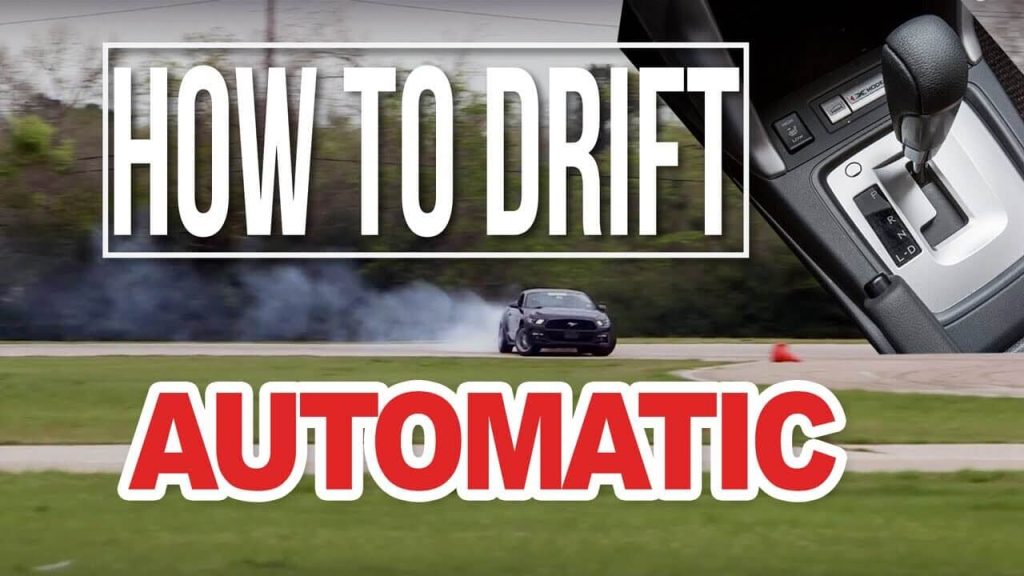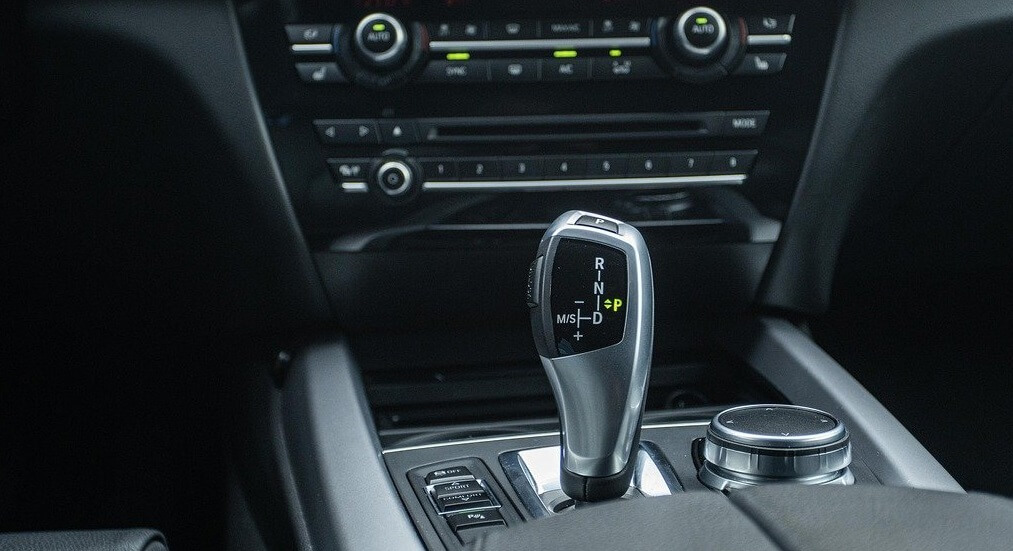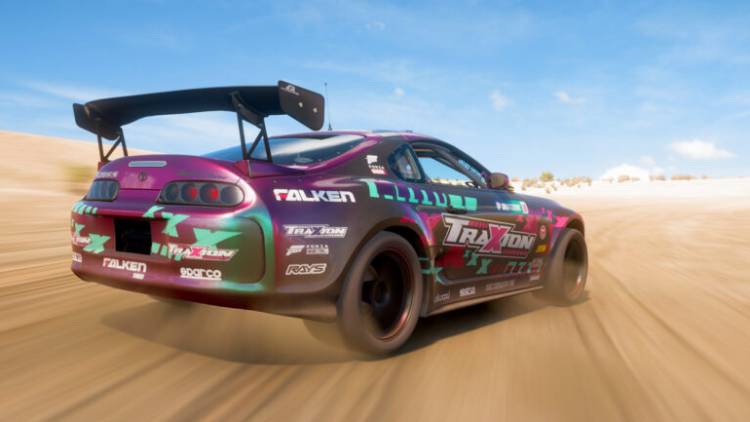This article was updated in July 18, 2023 with new products and information by Mark S. Taylor
To drift an automatic car, apply the handbrake, shift into manual mode, deactivate traction control, and perform a power slide. Drifting is a thrilling driving technique that involves intentionally causing a vehicle to slide sideways while maintaining control.
While the majority of drifters use manual transmission cars, it is possible to achieve drifts in an automatic car with a few modifications and techniques. In this article, we will discuss how to drift an automatic car safely and effectively.
By following the step-by-step process outlined below, you can experience the adrenaline rush of drifting in your automatic car. So, let’s get started and master the art of drifting!

Credit: youtube.com
Contents
Understanding Drifting In Automatic Cars
Drifting is a popular motorsport technique that involves intentionally causing a car to slide sideways through corners. While most people associate drifting with manual transmission cars, it is also possible to drift with an automatic car. However, there are some differences and nuances to keep in mind when drifting with an automatic car.
Let’s explore what drifting is and the key differences between drifting in manual and automatic cars.
What Is Drifting?
Drifting is a driving technique where the driver intentionally oversteers the vehicle, causing the rear wheels to lose traction and slide sideways. It requires a combination of skill and precision to maintain control of the vehicle while still keeping it in a controlled slide.
Drifting is often performed on closed courses or racetracks, as it can be dangerous and is not suitable for regular road conditions.
When it comes to drifting in automatic cars, there are a few important distinctions to consider. Here’s what sets drifting in automatic cars apart from manual cars:
Difference Between Drifting In Manual And Automatic Cars
- Transmission: One of the main differences between drifting in manual and automatic cars is the transmission. In manual cars, the driver has direct control over the gears and can shift accordingly to maintain the desired power and control. In an automatic car, the transmission automatically shifts gears, which can require some adjustments in drifting techniques.
- Throttle control: Drifting requires precise throttle control to initiate and maintain the slide. With manual cars, the driver can modulate the throttle easily with the clutch and accelerator pedals. Automatic cars tend to have a delay in throttle response, which requires the driver to be more anticipative and adjust accordingly to maintain the desired drift.
- Techniques and settings: Drifting in an automatic car may require different techniques and settings compared to manual cars. Automatic cars often have different driving modes, such as sport or manual mode, which can alter the shifting patterns for more responsive performance. Additionally, modifications to the car’s suspension and differential settings may be necessary to optimize drifting in automatic cars.
- Traction control and stability systems: Automatic cars are equipped with traction control and stability systems that can interfere with drifting. These systems are designed to keep the vehicle stable and prevent excessive sliding, which can make drifting more challenging. Disabling or adjusting these systems may be necessary for successful drifting in automatic cars.
Remember, practicing drifting techniques in a controlled and safe environment is crucial to avoid accidents and ensure the utmost safety. Always follow local regulations and seek professional guidance if you’re new to drifting or unsure of your skills. So, now that you have a better understanding of drifting in automatic cars, go ahead and put your skills to the test!
Preparing Your Automatic Car For Drifting
Drifting is a thrilling motorsport that requires skill, technique, and the right preparation. While manual cars are often associated with drifting, it is also possible to drift an automatic car. However, before you hit the track or take on the winding roads, it’s essential to ensure that your automatic car is properly maintained and equipped for drifting.
Here are some key points to consider:
Ensuring Proper Maintenance And Condition Of The Car
- Regularly check and change your car’s fluids, including engine oil, transmission fluid, and differential fluid. This helps to maintain optimal performance and prevent overheating during intense drifting maneuvers.
- Keep an eye on your car’s cooling system to prevent engine overheating. Installing an aftermarket radiator or upgrading the stock one can help improve cooling efficiency.
- Check and replace worn-out or damaged suspension components, as they play a vital role in maintaining stability and handling during drifting.
- Ensure that your car’s braking system is in top condition. Upgrading to performance brake pads and rotors can provide better stopping power when needed during drift maneuvers.
Choosing The Right Tires For Drifting
- Opt for high-performance tires with a softer compound to maximize grip during drifts. These tires often have a special tread pattern designed for enhanced traction and control.
- Consider investing in a set of dedicated drift tires. These tires have a unique tread design that allows for controlled slides and easier transitions between drifting techniques.
- Check and maintain the proper tire pressure for optimum performance and prevent premature tire wear.
- Regularly rotate your tires to ensure even wear and maximize their lifespan.
Upgrading Suspension And Brakes For Better Performance
- Upgrading your car’s suspension system can provide better stability, responsiveness, and control during drifts. Coilover kits or adjustable suspension components give you the flexibility to fine-tune your setup according to your drifting style.
- Enhance your car’s braking performance by upgrading to larger brake calipers, drilled or slotted rotors, and high-performance brake pads. These upgrades can provide better stopping power and fade resistance during intense drifting sessions.
Remember, preparing your automatic car for drifting involves more than just modifying certain components. Regular maintenance and ensuring your car is in optimal condition are equally important. By following these guidelines, you can make sure your automatic car is ready to take on the adrenaline-fueled world of drifting.
So, buckle up, take control, and get ready to experience the exhilaration of drifting like never before!

Mastering The Technique Of Drifting In An Automatic Car
Drifting in an automatic car may seem like a challenging feat, but with practice and the right technique, mastering this skill is achievable. In this section, we will guide you through the process of drifting in an automatic car, focusing on the subheading: mastering the technique of drifting in an automatic car.
Choosing The Right Location For Practice
- Look for open and spacious areas such as an empty parking lot or a racetrack, where you can practice drifting safely without endangering yourself or others.
- Ensure that the surface is smooth and free from any debris that could affect the tires’ grip.
- Avoid public roads or areas with heavy traffic to prevent accidents and legal consequences.
Understanding Weight Transfer And Throttle Control
- Familiarize yourself with weight transfer, which refers to the way a car’s weight shifts during a maneuver. In drifting, you need to learn how to utilize weight transfer to initiate and maintain a drift.
- Maintain smooth and controlled throttle inputs while drifting. Be mindful of the amount of power you apply to keep the car in a controlled slide and prevent it from spinning out.
Initiating A Drift With Handbrake Or Power Slide
- One way to initiate a drift in an automatic car is by using the handbrake technique. As you approach a corner, quickly pull the handbrake while turning the steering wheel in the opposite direction to break traction and induce oversteer.
- Another method is the power slide, which involves using the car’s power and weight transfer to initiate and maintain a drift. Apply throttle while turning into a corner and slightly counter steer to control the slide.
Mastering Clutch Kicking In Automatic Cars
- Although automatic cars lack a clutch pedal, you can still simulate the action of clutch kicking to initiate a drift. While in drive, lift off the throttle abruptly, then quickly apply full throttle to break traction and induce oversteer.
- Practice clutch kicking in a safe environment to get a feel for the timing and amount of throttle needed to execute a successful drift.
Mastering the technique of drifting in an automatic car requires patience, skill, and practice. Remember to always prioritize safety and respect the laws and regulations of your area when practicing this exhilarating motorsport. With dedication, you’ll eventually become proficient in sliding your automatic car around corners like a pro.
So, what are you waiting for? It’s time to hit the track and unleash your inner drifter!
Practicing Advanced Drifting Techniques
Drifting is an exhilarating driving technique that requires skill, control, and finesse. While traditionally associated with manual transmission cars, automatic cars can also be drifted with the right techniques. In this section, we will explore advanced drifting techniques for automatic cars.
From maintaining control and balance during drifts to perfecting transitions and figure eights, as well as understanding and executing donuts and burnouts, let’s dive into the exciting world of automatic car drifting.
Maintaining Control And Balance During Drifts:
- Find an open and safe area to practice drifting techniques.
- Begin by understanding your car’s weight distribution and how it affects the drift.
- Apply weight transfer techniques such as throttle control, braking, and steering inputs to maintain control during the drift.
- Focus on smooth inputs and avoid jerky movements that can lead to loss of control.
- Constantly monitor and adjust your throttle input to maintain the desired angle and speed during the drift.
Learning To Link Multiple Drifts:
- Mastering the art of linking multiple drifts requires precision and concentration.
- Practice initiating a drift and smoothly transitioning into another drift without losing momentum.
- Pay attention to your car’s speed and angle as you transition from one drift to another.
- Use steering inputs, throttle control, and weight transfer techniques to maintain control during the transitions.
- Gradually increase the difficulty by attempting to link drifts with different angles and directions.
Perfecting Transitions And Figure Eights:
- Transitions are a crucial skill to master in drifting as they allow you to change the direction of your drift smoothly.
- Practice initiating transitions by shifting your weight through steering inputs and throttle control.
- Aim to maintain a smooth and controlled transition without abrupt jerks or loss of control.
- Once comfortable with transitions, challenge yourself by attempting figure eights.
- Use the entire space available and focus on creating fluid and precise figure eights by smoothly transitioning from one drift to the other.
Understanding And Executing Donuts And Burnouts:
- Donuts and burnouts are crowd-pleasing drift techniques that require skill and control.
- To execute a donut, position your car in a tight circle and modulate your throttle and steering inputs to maintain a consistent drift.
- Burnouts involve spinning the tires and creating smoke by holding the brakes and applying throttle simultaneously.
- Remember to practice donuts and burnouts in controlled environments such as racetracks or empty parking lots.
- Always prioritize safety and follow local regulations when practicing these advanced drifting techniques in a controlled setting.
With consistent practice and patience, you can become proficient in these advanced drifting techniques for automatic cars. Remember to prioritize safety, respect local laws, and always practice in controlled environments. So, buckle up, embrace the adrenaline, and embark on your journey to becoming a master of automatic car drifting.

Safety Measures For Drifting In An Automatic Car
Drifting, a motorsport technique that involves intentionally oversteering to make the rear wheels lose traction, has gained immense popularity over the years. While most people associate drifting with manual transmission cars, it is entirely possible to drift an automatic car as well.
However, drifting in an automatic car requires specific safety measures to ensure a thrilling yet secure experience. In this section, we will explore some essential safety precautions for drifting in an automatic car.
Wearing Appropriate Safety Gear
- Helmet: Protects your head from potential injuries in case of accidents or collisions.
- Gloves: Enhances grip on the steering wheel and prevents blisters.
- Racing suit: Provides additional protection and ensures maximum comfort during extended drift sessions.
- Harness: Keeps your body secure in the seat during intense maneuvers, reducing the risk of getting thrown around.
Ensuring Proper Insurance Coverage
- Check your insurance policy: Verify that your current car insurance adequately covers drifting activities.
- Additional coverage: Consider purchasing additional coverage specific to motorsports or drifting.
- Communicate with your insurer: Inform your insurance provider about your intention to drift, ensuring you are compliant with their policies.
Practicing In Controlled Environments
- Find a suitable location: Look for racetracks, closed courses, or open areas like private lots that allow drifting.
- Empty parking lots: Choose large, empty parking lots to practice where there are minimal obstacles and pedestrians.
- Use cones as markers: Set up cones to create a drifting course to improve car control skills.
- Attend drift events: Join drift events organized by professionals to gain valuable insights and practice in a controlled environment.
Being Aware Of Legal Restrictions And Consequences
- Understand local laws: Research and familiarize yourself with the specific regulations and legalities surrounding drifting in your area.
- Respect public areas: Never attempt to drift on public roads or in areas not designated for drift activities.
- Consequences of illegal drifting: Be aware of potential fines, license suspension, or even legal consequences for engaging in illegal drifting activities.
By following these safety measures, you can enjoy the excitement of drifting while minimizing risks. Remember, safety should always be a top priority, allowing you to fully immerse yourself in the art of drifting without compromising your well-being or others’ safety.
Troubleshooting Common Issues In Automatic Car Drifting
Drifting a car can be an exhilarating experience, but it requires a certain level of skill and control. When it comes to automatic cars, drifting can present its own set of challenges. In this section, we will troubleshoot some common issues that you may encounter while attempting to drift an automatic car.
Let’s dive right in!
Overcoming Understeer And Oversteer:
- Understeer occurs when the front wheels lose traction and the car doesn’t turn as much as you want it to. To overcome understeer while drifting, you can try the following:
- Reduce your speed before entering the drift and maintain a steady throttle throughout the maneuver.
- Adjust your steering input to find the sweet spot where the car starts to slide but doesn’t lose control completely.
- Consider modifying your suspension setup to improve overall handling.
- On the other hand, oversteer happens when the rear wheels lose traction, causing the car to spin out. To deal with oversteer while drifting, you can:
- Use controlled throttle inputs to modulate the amount of power going to the rear wheels.
- Counter-steer quickly and smoothly to regain control of the car.
- Practice proper weight transfer techniques to maintain balance during the drift.
Dealing With Excessive Tire Wear:
- Drifting can be tough on tires, and excessive wear is common. To minimize tire wear, consider the following tips:
- Invest in high-quality drift tires that are designed to withstand the pressures of drifting.
- Rotate and replace tires regularly to ensure even wear and maximize their lifespan.
- Check tire pressure regularly and maintain it within the manufacturer’s recommended range.
Resolving Overheating Issues:
- Drifting puts a significant strain on your car’s engine and cooling system, often leading to overheating. To avoid or resolve overheating problems:
- Upgrade your radiator to a more efficient one that can handle increased heat dissipation.
- Install an oil cooler and ensure you use high-quality engine oil that can withstand high temperatures.
- Monitor your car’s temperature gauge closely and take breaks to let the engine cool down if it starts to overheat.
Troubleshooting Transmission Problems:
- Drifting can put immense stress on your car’s transmission. If you are experiencing transmission issues while attempting to drift, try the following troubleshooting steps:
- Ensure you are using the correct transmission fluid and that it is at the appropriate level.
- Consider upgrading to a performance transmission or installing a transmission cooler to prevent overheating.
- Have your transmission inspected by a professional if you notice any grinding, slipping, or other abnormal behavior.
Remember, drifting can be challenging, especially with an automatic car. Practice in a controlled environment, always prioritize safety, and consult with experienced drifters for additional guidance. By understanding and troubleshooting common issues, you’ll be well-equipped to enjoy the art of drifting with your automatic car.
So, get out there, hone your skills, and embrace the thrill of sideways action!
Frequently Asked Questions For How To Drift A Automatic Car
Can You Drift An Automatic Car?
Yes, it is possible to drift an automatic car. However, it requires a specific technique called power sliding and you need to disable any traction control systems to allow for controlled sliding during the drift.
What Is The Difference Between Drifting A Manual And Automatic Car?
The main difference between drifting a manual and automatic car is the level of control. In a manual car, you have full control over gear selection and clutch engagement, allowing for finer adjustments during a drift. In an automatic car, you have less control, but it is still possible to drift using techniques like power sliding.
How Do You Initiate A Drift With An Automatic Car?
To initiate a drift with an automatic car, find a suitable location with enough space. Disable any traction control systems and shift the car into a lower gear manually, if possible. Apply a quick burst of throttle while steering into the desired direction of the drift, then modulate the throttle and steering inputs to maintain control.
Is Drifting An Automatic Car More Difficult Than A Manual Car?
Drifting an automatic car may be slightly more difficult compared to a manual car due to the reduced control over gear selection and clutch engagement. However, with practice and mastering the technique of power sliding, it is still possible to achieve impressive drifts in an automatic car.
What Are The Risks Of Drifting An Automatic Car?
Drifting any car poses certain risks, including potential damage to the vehicle, loss of control, and danger to yourself and others. It is crucial to ensure that you drift in a controlled and safe environment, away from pedestrians and other vehicles, and always practice responsible driving techniques.
Conclusion
To sum it up, drifting an automatic car is possible with the right techniques and practice. Although it may require some modifications and adjustments to your vehicle, including changes to the suspension and tires, the thrill and excitement of performing controlled drifts can be well worth it.
By understanding the principles of weight transfer, using manual gear selection when necessary, and mastering the art of throttle control, you can confidently navigate through corners with style. Remember to always prioritize safety by wearing appropriate gear and practicing in a controlled environment.
So, whether you are a drifting enthusiast or simply looking to learn a new skill, don’t let the misconception that only manual cars can drift discourage you. With determination and practice, you can experience the adrenaline rush of drifting in your automatic car.
Here are some articles that might interest you:

